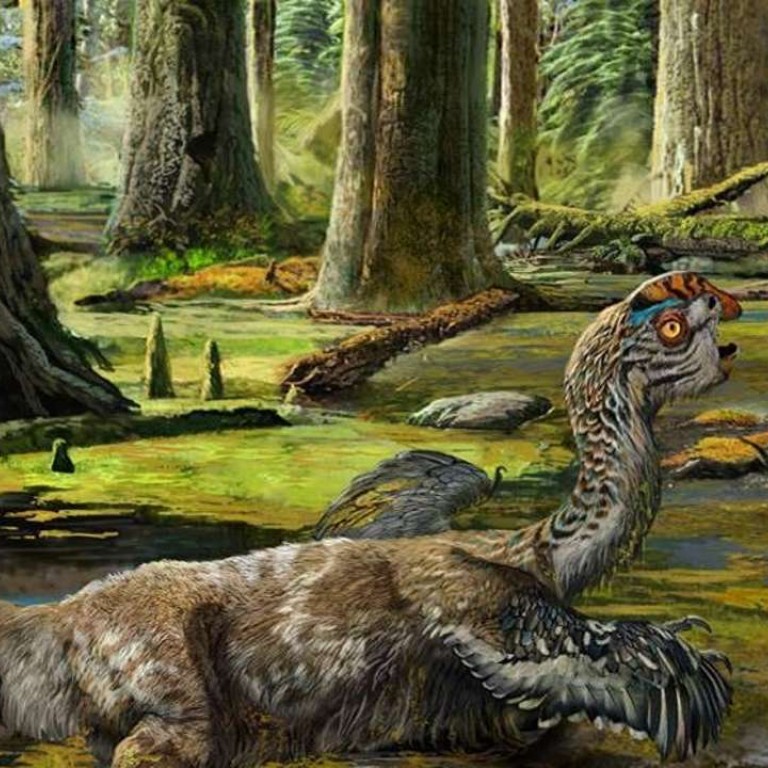
Fossilised remains of bird-like dinosaur that died ‘fighting for life in flood’ discovered in China
Remains of animal that lived more than 65 million years ago found at construction site in Jiangxi province
The fossilised remains of a large bird-like dinosaur have been found in China which appeared to have been fighting for its life in a flood in the moments before it died, according to researchers.
The remains of the new species were discovered at a construction site in Ganzhou in Jiangxi province, the journal Scientific Reports said on Thursday.
The dinosaur’s head is lifted sharply upwards and its wings and legs spread out as if it was struggling, according to Lu Junchang, associate professor at the Chinese Academy of Geological Sciences in Beijing. To find a fossil in such a posture is rare, as most specimens are pressed flat when preserved.
We were shocked when we separated the specimen from rock
“We were shocked when we separated the specimen from rock”, Lu told the South China Morning Post.
“We shocked by its defiance in the face of death and willingness to live. It happened millions of years ago, but the preservation of the fossil was so good it looked like yesterday.”
The specimen was discovered during blasting at the construction site and one of the bore holes went straight through the remains.

The research team named the dinosaur Tongtianlong, meaning “dragon reaching out to the sky” in Chinese.
The animal might have fallen into a ditch or stumbled into boggy ground as it tried to escape from incoming floodwater, researchers believe.
It kept fighting against rising mud and water and pushed its head upright for a breath of air until the world went dark, they said.
“We don’t know how long the struggle lasted, but we believe the creature never gave up,” Lu said.
The dinosaur, between the size of an ostrich and turkey, was an oviraptor, a variety of dinosaur that walked on two legs.
Oviraptor means“egg thief” because the first specimens found in Mongolia were sitting over a nest of eggs.
Later studies showed the animal was no thief, but a mother trying to protect its unhatched young when it died. The name, however, has stuck.
The new species has distinct features separating it from other known oviraptors.
They include its dome-like skull and highly convex incisive bones.
The Tongtianlong is among many new species of oviraptor discovered in southern China in recent years.
It is lucky that we have the Tongtianlong specimen preserved after the blast
Their discovery suggests the small and medium-sized dinosaurs with bird-like features such as feathers and beaks flourished in the late Cretaceous, a period of a few million years before the massive extinction of dinosaurs 65 million years ago.
What is now southern China could have been a warm, humid place at that time, allowing the animals to thrive, according to Lu.
Many fossils sites in southern China are, however, under threat due to the massive amount of construction work in the region, the researchers warned.
“It is lucky that we have the Tongtianlong specimen preserved after the blast, but at the same time, many other specimens might have disappeared in dust and smoke under bulldozers,” Lu said.

